Home » Kitchen Cabinet (Page 7)
Category Archives: Kitchen Cabinet
Complimentary Color Schemes to Last You a Lifetime
Color schemes have a tendency to come and go as popular trends begin to fade out of style. If you’re anything like me, when it comes to your kitchen, you’re looking for a color palette which will not only take your breath away but which will also last you a lifetime. The first thing someone sees when they enter your home is the colors which you’ve incorporated into the room. If you’re looking to remodel or redesign your kitchen, here are some complimentary color schemes which will ensure your kitchen is always up-to-date and stylish.
Black and White
A black and white color scheme is the ultimate classic look. This pairing has been around since the dawn of time and is still a beloved favorite amongst homeowners. Black and white stands strong on its own, but it also paves the way for some flexibility within your kitchen. This dynamic color scheme duo easily allows for statement pieces to be added or for a bright pop of color to be incorporated.
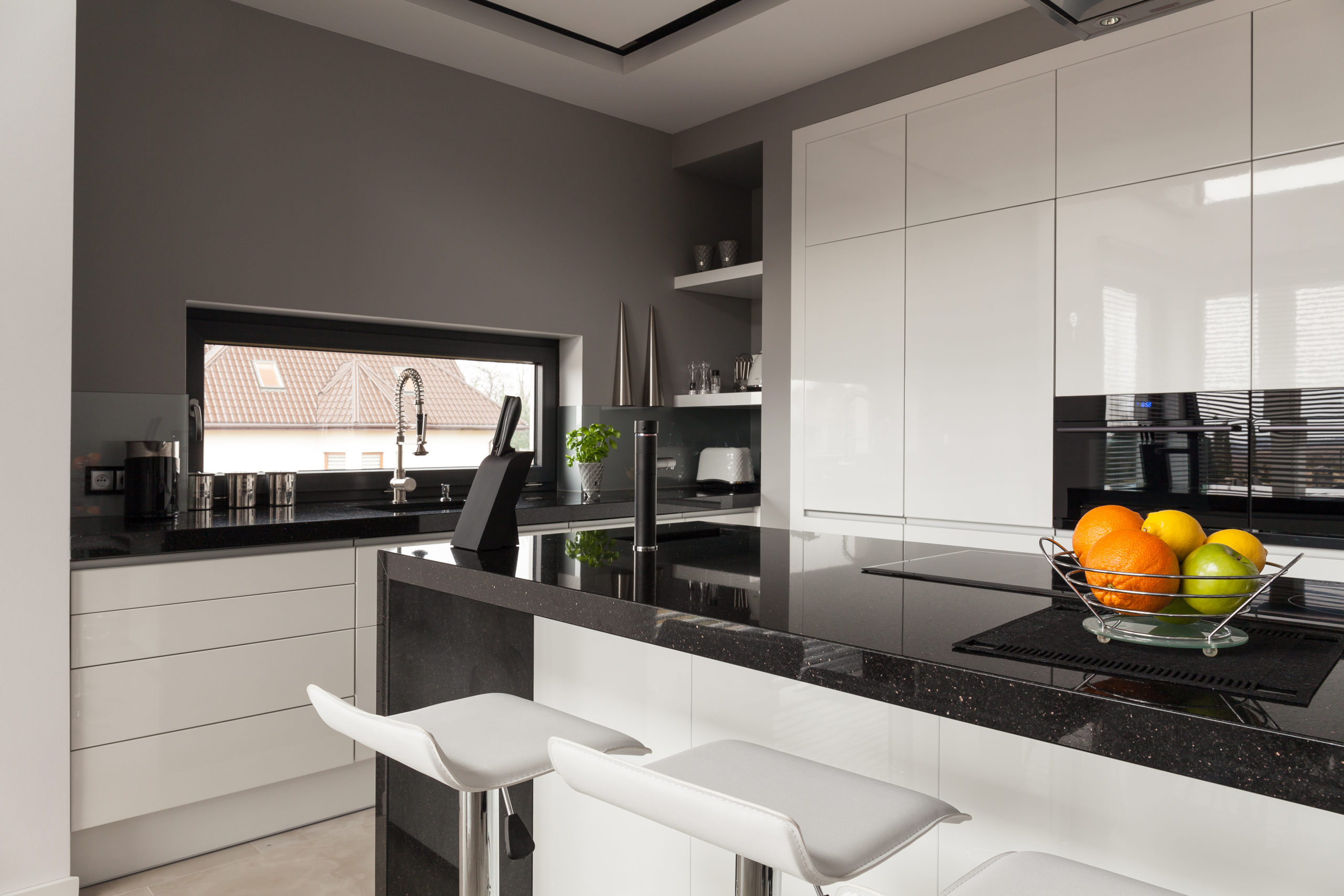
Blues and Brown
Another amazing choice for your kitchen color scheme is blues and browns. This versatile look can be used to create a natural aesthetic which loosely encompasses earth and sky. Oftentimes, homeowners like to use a toned-down, dusty blue in their kitchen. This exudes and enhances a soothing and relaxing feeling within the room.
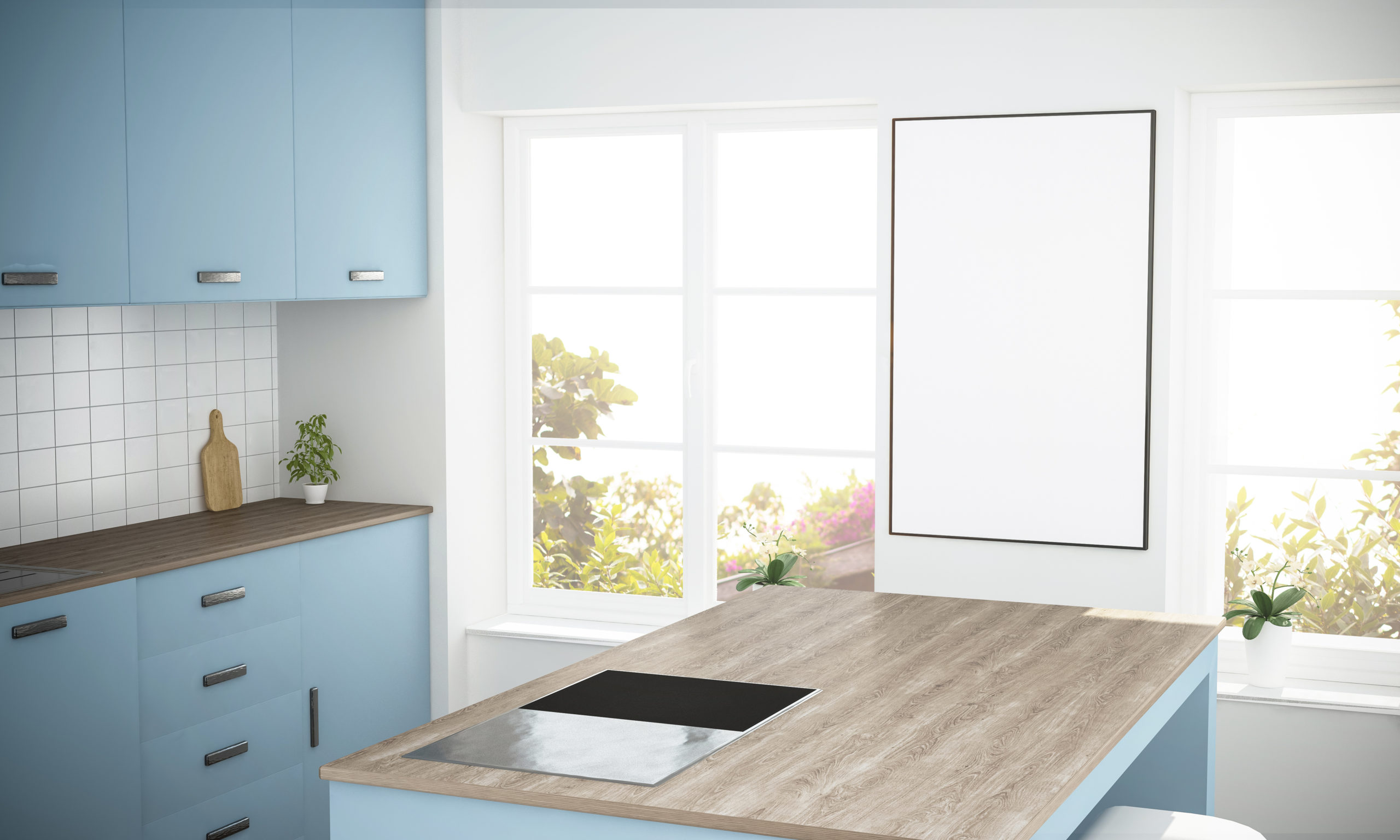
White on White
Yes, you read that correctly. White on white is a color scheme if you can believe it or not. Introducing an all-white kitchen into your home, opens the door to endless possibilities. White on White gives a sense of openness and pristineness. It brightens up your kitchen while simultaneously working to enhance the natural light in your room. As well as providing a refreshing feeling in your home, white on white allows you to play around with all sorts or accents colors. If you’re in the mood for a kitchen switch-up, simple accent pieces provide an easy transition for change.
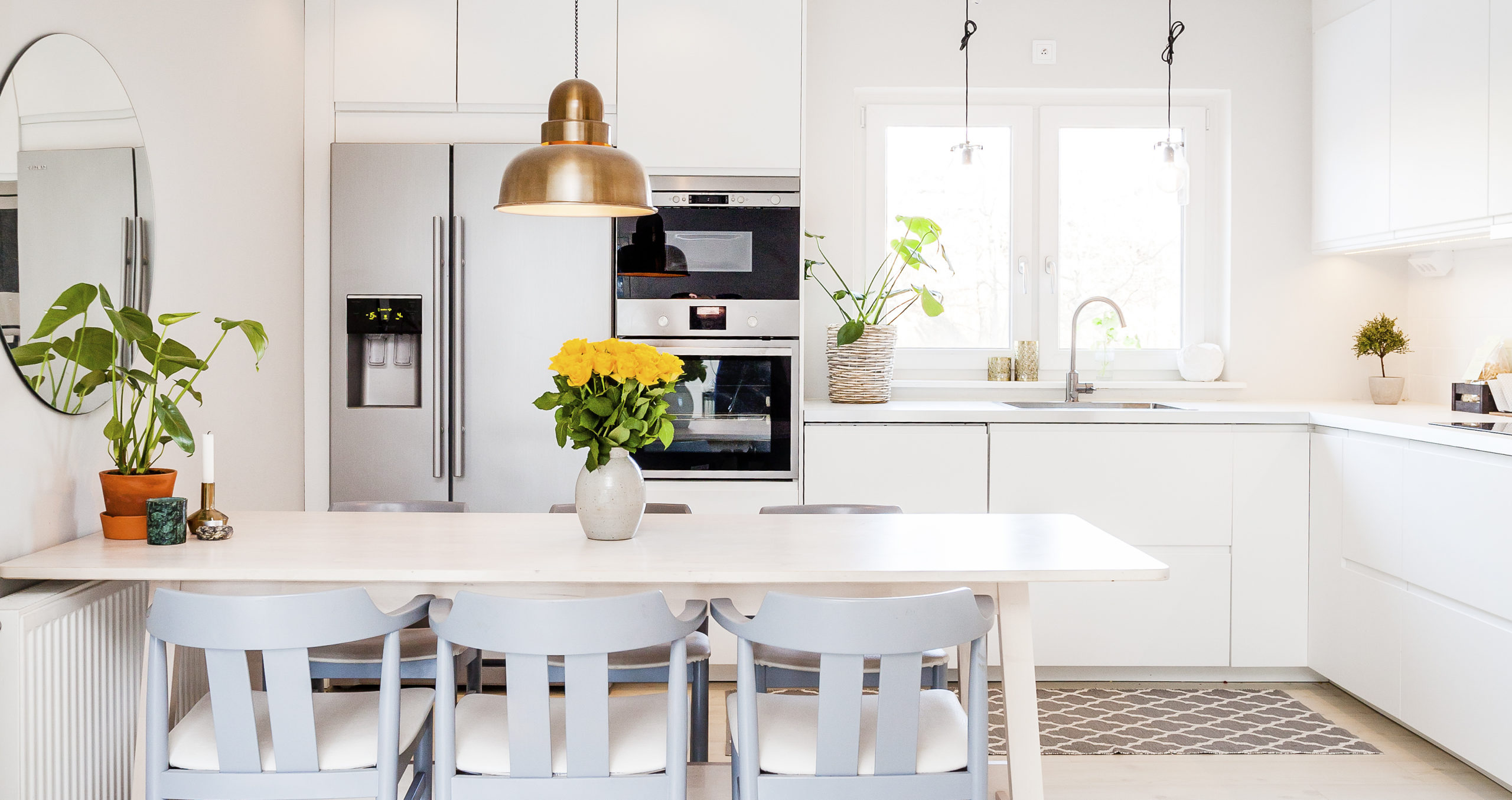
Gray and White
If you’re in a smaller kitchen and want to provide more depth in your room, a gray and white color scheme is the way to go. In comparison to the white on white color scheme mentioned above, adding gray into the mixture creates greater dimension in the room. It’s also less likely to fall victim to the daily wear and tear a kitchen encounters throughout the years. Gray plays well off of other materials such as stone countertops, concrete tiles, exposed wood, etc.
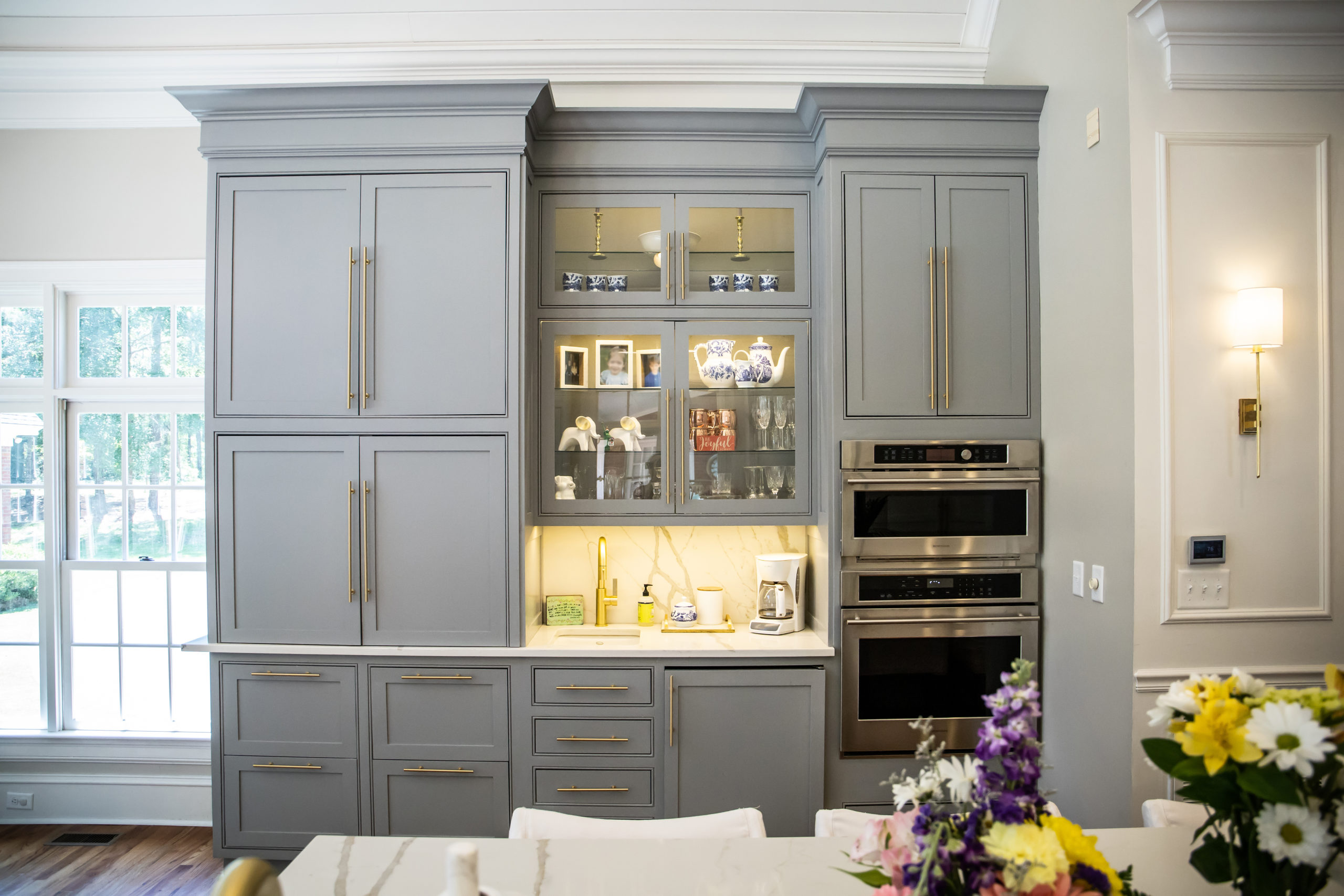
Kitchen Solvers
We want your kitchen to feel like home. Here at Kitchen Solvers, it’s our goal to ensure you have the Most Pleasant Remodeling Experience. From choosing your kitchen’s color palette to deciphering which countertop material is the perfect fit, we are here to answer all your question on this process. Feel free to call us today for your kitchen consultation or read some of our latest blog articles like Confused about Cabinetry? A guide to a Cabinet Reface or Replace! or Classic Kitchen Color Palettes.
The post Complimentary Color Schemes to Last You a Lifetime appeared first on Kitchen Solvers.
Did you miss our previous article…
https://www.thekawaiikitchen.com/?p=156
Obstacles Linger, Even in Face of Uptick
Supply side challenges continue to hamstring both new housing and the residential-construction trade, even as both market sectors continue to exhibit significant 2021 gains. Among the key statistics and forecasts released in recent weeks by government agencies, research firms and industry-related trade associations were the following:
HOUSING STARTS & NEW-HOME SALES
Despite recent gains in housing production, concerns linger over weakening permit numbers, a slowdown in new-home sales and rising materials costs, the National Association of Home Builders said. Overall housing starts were pegged at a seasonally adjusted annual rate of 1.64 million units, according to the latest available figures, as strong demand helped offset supply-side challenges. Builders continue to contend with rising home prices and materials delays, as well as with shortages of buildable lots, a dearth of skilled labor and a challenging regulatory climate, said Robert Dietz, NAHB chief economist. “The weakening of single-family and multifamily permits is due to higher material costs, which have pushed new home prices higher since the end of last year,” Dietz said. “This is a troubling sign for future housing production (and) a challenge for a housing market that needs additional inventory.”
RESIDENTIAL REMODELING
Residential construction professionals experienced their busiest quarter since at least 2015 in the first three months of 2021, with confidence among remodeling construction and design firms running high, according to Houzz Inc. The online platform for home remodeling and design reported positive results for its “Q3 2021 Houzz Renovation Barometer,” a quarterly gauge of residential renovation market expectations, project backlogs and recent activity among businesses in the construction, architectural and design services sectors. However, the heightened activity is not without challenges, according to Houzz, which reported that supply chain delays, extreme weather patterns, rising product and material costs and labor shortages “continue to create major headwinds for the industry.” In a related development, annual gains in homeowner improvement and maintenance spending are poised to accelerate in the second half of 2021 and remain elevated through mid-year 2022, according to the Leading Indicator of Remodeling Activity (LIRA), released in by the Remodeling Futures Program at the Joint Center for Housing Studies of Harvard University. The LIRA projects that annual growth in home renovation and repair expenditures will reach 8.6% by the second quarter of 2022, with annual expenditures expected to exceed $380 billion.
EXISTING-HOME SALES
Existing-home sales, despite several months of declines, were up 22.9% from a year ago, and available supply has improved in recent months due to gains in housing starts and existing homeowners listing their homes, the National Association of Realtors reported. “Home sales continue to run at a pace above the rate seen before the pandemic,” said Lawrence Yun, chief economist for the Washington, DC-based NARI, which pegged the latest seasonally adjusted annual rate for resales at 5.86 million units. Total inventory was down 18.8% from a year ago, while unsold inventory is down year to date, from 3.9-month supply in 2020 to a 2.6-month supply at the same time this year, the NAR added.
APPLIANCE SHIPMENTS
Reflecting gains in new construction and residential remodeling, domestic shipments of major home appliances continued their rebound from the impact of COVID-19 in the first half of 2021, the Association of Home Appliance Manufacturers reported. According to the Washington, DC-based AHAM, an April-to-June spike of 23.7% over the same quarter a year ago was largely responsible for an overall year-to-date gain of 26.6% in major appliance shipments compared to the same six-month period in 2019. First-half gains were posted in all key product categories, including food preservation (+31.6%), home laundry (+27.7%), cooking (+24.1%) and kitchen cleanup (+17.4%), AHAM noted.
The post Obstacles Linger, Even in Face of Uptick appeared first on Kitchen & Bath Design News.
Did you miss our previous article…
https://www.thekawaiikitchen.com/?p=152
Different Approach Delivers Local Vibes
San Francisco, CA — When you hear that your clients recently moved from Japan after having lived in Tokyo for two decades, it might seem logical to incorporate Asian influences into the renovation of their home to make them feel comfortable. However, Jeni Gamble knew they wanted a different approach.
“There would be no bamboo, no shoji,” says the founder/creative director and LEED AP/NCDIQ at gamble + design in San Francisco, CA, who worked in collaboration with Arrow Builders to remodel this home in the Presidio Heights neighborhood of San Francisco. “That would have felt too contrived. Instead, they were interested in learning more about their new city and creating a home that reflected that area. They also wanted to keep the renovation within the community, so they were also very interested in meeting and working with local artisans who could show them something new.”
Subtle, carefully crafted details
With a sophisticated design eye, Gamble’s clients wanted to transform the previously gaudy and heavily ornamented home into one that showcased a pared-down elegance and serenity imbued with subtle, carefully crafted details and custom pieces from California artisans.
“The home previously had a ton of layered ornamentation,” says the designer. “That may be okay for an old historic home. But for my clients’ home, with its more modern architecture, it just didn’t make sense. So, we stripped away the applied finishes and brought the home back to its original architecture.”
As such, gone was the hodgepodge of random, highly patterned tiles that made up the kitchen’s backsplash. Gone, too, was the painted blue floor – which was stripped and returned to its natural walnut state – as well as the overabundance of matching blue elements that overtook the room.
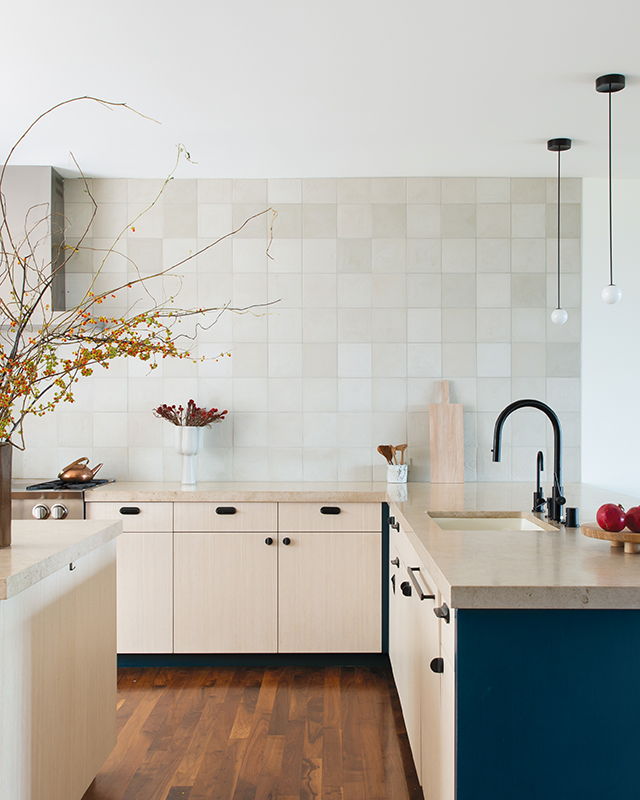
Jeni Gamble included materials and finishes that provide texture and depth, such as the Jura limestone countertops and custom white oak cabinetry that reinforce the feeling of nature. To highlight local artisans, she accented the cabinetry with custom knobs and pulls crafted by Marin County’s Alice Tacheny.
In their place, Gamble brought in materials and finishes that provide texture and depth, such as the Jura limestone countertops that reinforce the feeling of nature, along with the custom white oak cabinetry from local cabinet maker Bachmann Woodworking.
“We love working with white oak,” says Gamble. “It’s a staple for us because of its density. We also love it because it has a very fine grain pattern, which offers warmth when allowed to show through the stain. Often, we play with stain, but for this kitchen, rather than allowing the wood to take on a yellow cast, we purposefully lightened it to control the color palette. We also carried the oak throughout the rest of the home, using it for the dining room table as well as the staircase.”
The designer accented the lightened cabinetry with end panels and frames for the tall cabinetry, painted with Farrow & Ball’s deeply hued Hague Blue paint.
“Blue was everywhere in the previous kitchen,” she says. “Our clients do like blue; they just didn’t want so much of it, so we toned it down. The blue color also serves as a ‘bookend’ for the cabinetry. I often like to bookend, or sandwich, elements to give them a beginning and an end. Sometimes I use different materials or finishes. In this case,
I used the blue paint.”
Gamble also used the dark shade to draw attention to the custom niche she created within the refrigerator/pantry wall.
“We like to incorporate niches into our designs that can be used as coffee or tea stations,” says the designer. “They have become a signature feature for us. Carving out a space that can be used specifically for this purpose helps keep the counter clear so it doesn’t get cluttered. Often, people’s favorite part of the day is their coffee, so we like to celebrate it!”
To fulfill the desire to highlight local artisans, Gamble accented the cabinetry with custom knobs and pulls, crafted by Marin County’s Alice Tacheny. The blackened metal is on-trend with current kitchen design and matches the MGS Black Steel faucet and trio of peninsula pendants from Michael Anastassiades’ Brass Architectural Collection.
Outdoor Sanctuary
While the living room offers views of Presidio and the Golden Gate Bridge, the kitchen grants glimpses to the homeowners’ outdoor living space. Patio doors provide physical entry to the barbecue/seating area, while their transparent glass offers visual access to a large painted mural of a mountain range. Boasting calming shades of grays and whites, the mural also serves as artwork for the kitchen and gives the homeowners some privacy from their neighbors.
“Having a kitchen adjacent to an outdoor space is always coveted,” indicates Gamble. “For these clients, their outdoor courtyard is sheltered for barbecuing and is quickly accessible from the kitchen prep area.” 
The post Different Approach Delivers Local Vibes appeared first on Kitchen & Bath Design News.
Did you miss our previous article…
https://www.thekawaiikitchen.com/?p=148
SEN to Host Design Sales Educational Program
Chicago, IL – SEN Design Group invites kitchen and bath designers and sales professionals to the Good-Better-Best Sales School, scheduled for September 8-9 at theMART in Chicago, IL. The GBB Sales School, sponsored by Custom Wood Products, Inc, Bridgewood Cabinetry and Exclusive Cabinet Agents LLC, will be conducted by SEN Design Group’s Senior Vice President, Dan Luck, an industry expert with over 43 years of experience.
The two-day program will deliver advanced training in the successful sales strategies that will help designers and sales professionals increase their gross profit margins by up to 40%. Participants will become proficient in the science of consumer decision-making, effectively drive the sale conversion and understand why the Good-Better-Best (GBB) selling system is so effective, according to SEN Design Group.
“As a cabinet rep wanting our dealers to maximize their sales and profitability, we are thrilled to be a partner in bringing this first class, impactful sales training program to the kitchen and bath industry,” says Vince Hodshire, principal of Exclusive Cabinet Agents, LLC.
“The GBB selling system leverages the prospect’s emotional engagement with the remodeling project,” says Luck. “Consumers like choice, but not too many choices. GBB pricing tiers remove the ‘to buy or not to buy’ step from the decision-making process.” Instead, it guides prospects through a pricing structure that offers a sense of empowerment. When consumers are presented with three options to choose from, most of them will select the middle option, which represents increased revenues.
“We at SEN Design Group seek to help businesses convert more sales and earn higher revenues,” adds Luck. “The GBB sales process has been proven to significantly increase gross profit margins, and this two-day program will give designers the most effective tools to achieve speedy closings.”
The regular tuition fee is $1,695 for this intensive two-day sales training program. Dealers who are part of a sponsor’s network can save $500, using a promotional code to register for $1,195. SEN members who have the SEN U annual education subscription as part of their membership can attend for under $300.
For additional information about the program and about membership, visit https://sendesigngroup.com.
The post SEN to Host Design Sales Educational Program appeared first on Kitchen & Bath Design News.
Did you miss our previous article…
https://www.thekawaiikitchen.com/?p=146
Spotlight Kitchens of August – Cabinet Refacing
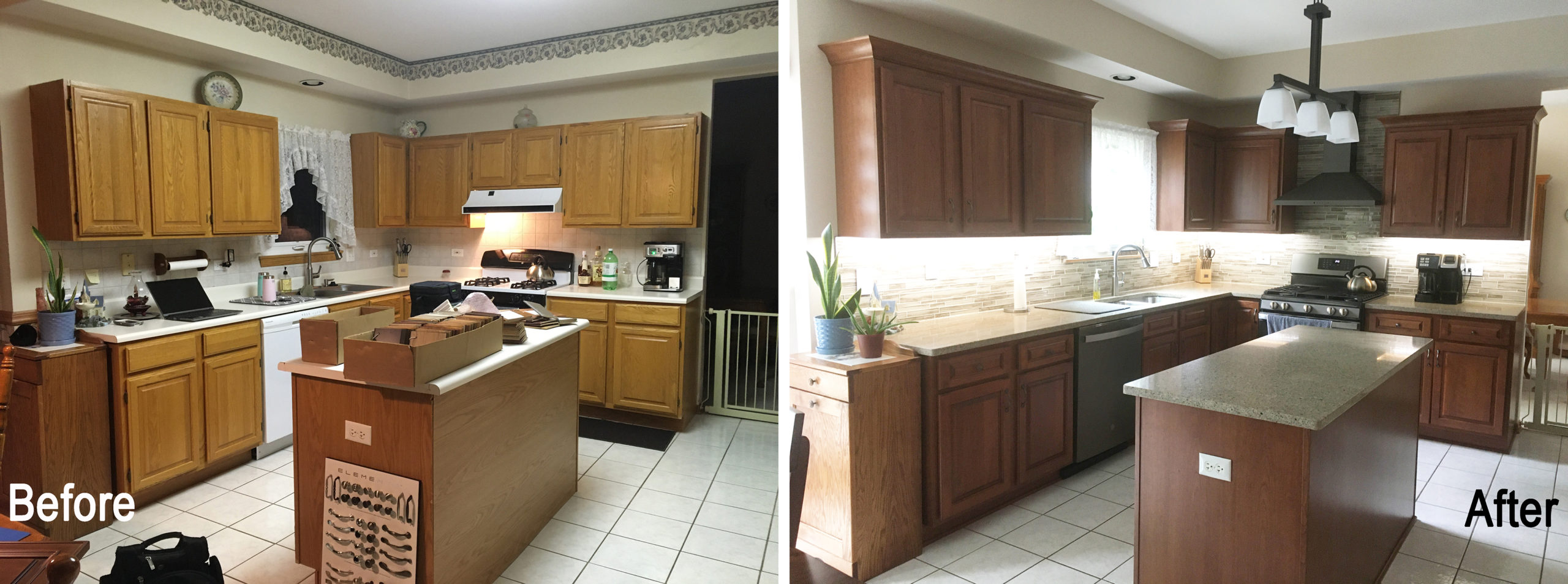
- Project Location: Mundelein, IL
- Remodel type: Cabinet Refacing
- Type of door style: Raised Panel
- Remodel style: Traditional
- Color: Nutmeg Stain
- Door Material: Cherry
- Countertop: Quartz
- Countertop color: Toasted Almond
- Backsplash: Zen Ease Mosaic
For more information about this project, please visit Kitchen Solvers of Grayslake’s Gallery page.
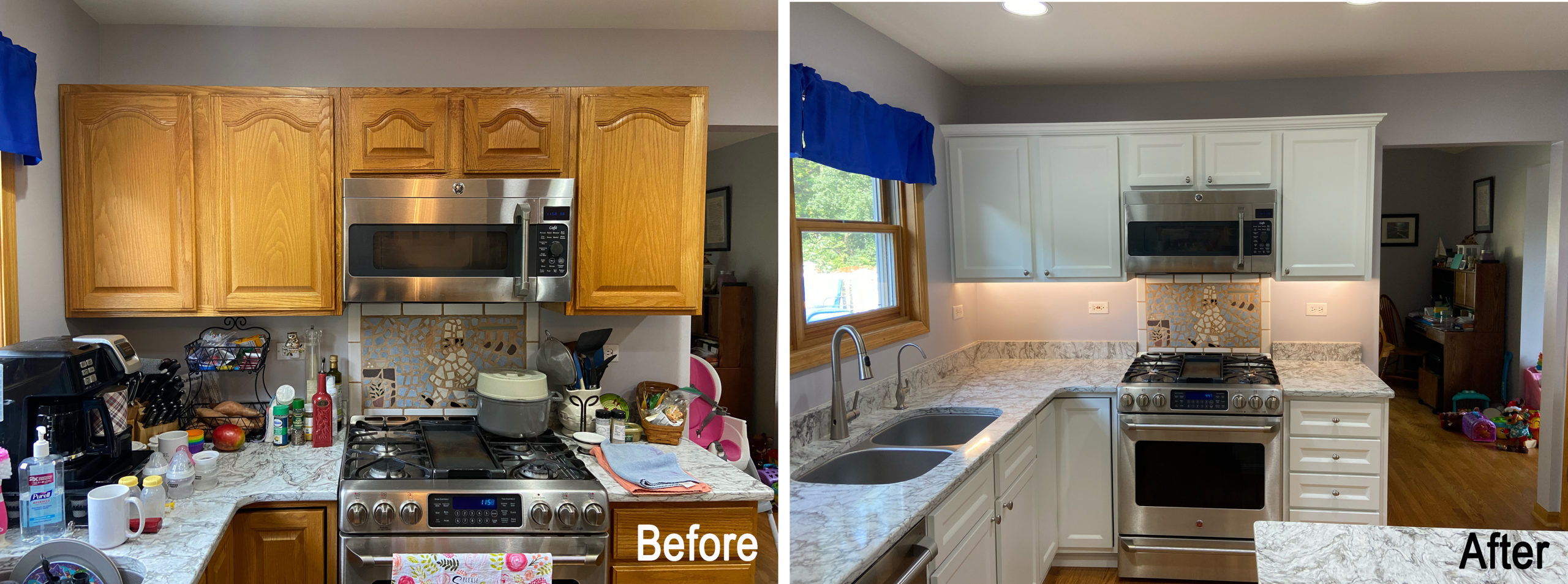
- Project Location: Spring Grove, IL
- Remodel type: Cabinet Refacing
- Type of door style: Shaker Bevel
- Remodel style: Modern
- Color: Stratus Super Matte White 3D Laminate
For more information about this project, please visit Kitchen Solvers of Grayslake’s Gallery page.
The post Spotlight Kitchens of August – Cabinet Refacing appeared first on Kitchen Solvers.
Did you miss our previous article…
https://www.thekawaiikitchen.com/?p=132
Kohler Details Progress on Key Corporate Initiatives
KOHLER, WI — Kohler Co., the Kohler, WI-based manufacturer of plumbing products, tile, cabinetry and lighting, has outlined a series of steps the company is taking to adhere to corporate commitments tied to social, governance and environmental issues.
Kohler’s 2020 Believing in Better Metrics Report, released in August, addressed the progress being made to reduce the company’s GHG emission intensity, waste-to-landfill intensity, water-use intensity and other key initiatives.
“While Kohler celebrates creativity, diversity and innovation in all its forms, we know we can do more to protect the planet, build resilient communities and enrich the quality of life for everyone,” said Laura Kohler, senior v.p./human resources, stewardship and sustainability.
Among the highlights of Kohler’s “Believing in Better” initiative were:
n A reduction in operational intensities since 2008 that has cut net greenhouse gas emissions by 48%, operational energy use by 22%, waste-to-landfill by 47% and water use by 46%.
n Generated more than $1 billion in sales from environmentally favorable products in 2020.
n Completed more “Design for Environment” (DfE) projects, an incubator for developing products that are better for the planet, than in all previous years combined.
n Pivoted manufacturing facilities to produce and donate 80,000 face shields for frontline workers during the height of the COVID-19 pandemic.
n Provided 3,500 showers for the unhoused.
n 26 teams competed in the annual Innovation for Good I-Prize, an internal competition that encourages associates to develop solutions with a social purpose. Three ideas were awarded funding for incubation.
n More than 1,600 associates from around the world united around various communities and their allies, including launching a “hate has no home” education and fundraising campaign.
“Kohler is committed to providing access to safe water for communities around the globe, delivering innovative solutions to address pressing social issues and strengthening its efforts around diversity, equity and inclusion,” Laura Kohler said.
The post Kohler Details Progress on Key Corporate Initiatives appeared first on Kitchen & Bath Design News.
Did you miss our previous article…
https://www.thekawaiikitchen.com/?p=109
Sustainability Initiatives Launched by Formica Corp.
CINCINNATI, OH — Formica Corp., the Cincinnati-based manufacturer of decorative surfacing materials, has announced a suite of new sustainability initiatives, including a goal to achieve net carbon neutrality by 2030.
“Consumers are seeking surfacing options that are better for the planet, and we are laying out a clear and aggressive action plan to meet their expectations,” said Mitch Quint, president of Formica Corp. North America. “While Formica Corp. has always prioritized sustainable practices, the company’s 2019 acquisition by Netherlands-based Broadview Holdings helped accelerate its progress,” Quint added.
As part of its goal to achieve net carbon neutrality by 2030, Formica Corp. said it is aiming for a midpoint benchmark of a 25% reduction of CO2emissions and 10% reduction in primary energy demand by 2026. In addition, the company will pursue a 5% reduction of its water footprint in the next five years.
Alongside its goal to achieve net carbon neutrality, Formica Corp. has pledged to publish its environmental impact data every year, along with its targets and initiatives for the coming year.
The post Sustainability Initiatives Launched by Formica Corp. appeared first on Kitchen & Bath Design News.
Did you miss our previous article…
https://www.thekawaiikitchen.com/?p=107
Luxury Clients ‘Crave Experience,’ NKBA Research Reveals
HACKETTSTOWN, NJ — Luxury kitchen clients want an authentic, original design that marries beauty and function, along with elegance in simplicity, precise execution and a personalized scheme – from aesthetics to function – that meets their specific needs. Above all, they “crave the overall experience” that results in their dream kitchen.
Those are among the key findings revealed at a recent National Kitchen & Bath Association summit entitled “Luxury Defined.” The online event, sponsored by Cambria, the Le Sueur, MN-based quartz surfaces supplier, was based on exclusive, qualitative research that studied the key factors that elevate a kitchen to the luxury space, according to the NKBA.
“Luxury is a differentiated renovation experience that provides an ‘elevated’ living experience,” said Tricia Zach, head of research for the Hackettstown, NJ-based trade association. “It’s not about the amount of money that’s being spent.”
Rather, Zach said, “luxury happens when proven designers navigate clients skillfully and efficiently; numerous possibilities are optimized (needs, preferences, values, the art and the science, expertise, materials, products) and options are intentionally curated and executed to deliver an elevated living experience, with less risk and regret.”
“A luxury kitchen is an experience,” Zach said, “how it makes the homeowner feel and how it serves their family’s needs. It’s personal, a clear reflection of the client’s personality and lifestyle. It’s simple, with everything having its discreet place and no room for the extraneous. And it’s beautiful, emerging from a layered design, a harmonious blend of color, materials and surfaces (with) natural and organic elements combining to showcase artisan details, and create a unique and compelling space that’s timeless.”
Besides being affluent, luxury clients, said Zach, “are discerning, lead full, active lives and love to travel.
“They recognize beauty in everything, from nature to architecture,” Zach said. “They’re also collaborative and excellent listeners, but they want and expect to be heard. They’ve thought about their dream kitchen for a very long time and come prepared with examples of the design elements they want to consider.
“They’re definitely outcome-driven,” Zach added. “Most have a specific vision, or if they don’t, they expect their kitchen designer to deliver a finished product that will delight them, and they’re willing to invest to get that result.
“Finally,” she said, “they value and trust expertise, and understand that they absolutely need a kitchen designer to navigate this lengthy and complex undertaking. They know it’s going to be a process, not always smooth, but the result is a realization of a dream.”
The post Luxury Clients ‘Crave Experience,’ NKBA Research Reveals appeared first on Kitchen & Bath Design News.
Did you miss our previous article…
https://www.thekawaiikitchen.com/?p=105
Key Trends in Safety & Wellness Design
Safety has always been a key component of the design and construction industry, but it has taken on added importance due to the COVID-19 pandemic. Ventilation and indoor air quality have been squarely in the spotlight, as has the need for accessibility, as many people were bringing relatives out of assisted-living facilities and nursing homes.
Even before the public-health crisis, however, clients were concerned about water quality in the wake of the Flint, MI lead-contamination disaster; about preventing falls as they or loved ones aged; about indoor air quality as smoke and ash rained down from nearby wildfires and, for those with respiratory or immune system conditions, about toxins in their home materials and furnishings. Those concerns have increased, as well.
All these factors, along with an increased focus on wellness design, has spurred a boom in real estate, design, remodeling, technology and new-home construction. What follows are the perspectives of eight professionals regarding the latest trends. They are:
- National homebuilder Shea Homes’ Marketing V.P. Janet Benavidez;
- New Jersey-based smart home technology integrator, speaker and author Ryan Herd;
- Denver-based full-service interior designer Jennifer Lowry;
- Maria Stapperfenne, CMKBD, a former president of the National Kitchen & Bath Association;
- Colorado-based CMKBD Jan Neiges;
- Shea Pumarejo, a San Antonio-area CMKBD;
- Real estate broker Mauri Tamborra, with RE/MAX Leaders serving Colorado and California’s Central Coast;
- Debra Young, a Delaware-based occupational therapist specializing in inclusive design and a certified specialist in environmental modifications.
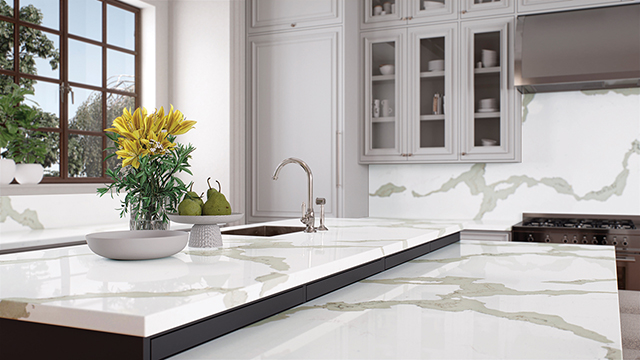
Non-porous surfaces, like engineered stone, are increasingly popular with homeowners and design pros.
Photo: Caesarstone
HEIGHTENED INTEREST
There’s nothing like a natural disaster or global pandemic to make people feel less safe – and crave a feeling of security at home. “Health and safety preferences were already growing,” says Shea Homes’ Benavidez, “but the COVID-19 pandemic accelerated homebuyers’ interest in wellness.” This extends far beyond germ reduction to what the building executive calls “emotional, financial and physical wellbeing.” She cites a recent study showing technology, better-equipped kitchens and sanitation as the most desired home features.
Real estate professional Tamborra agrees. “We have noticed heightened interest in technology-based solutions,” she comments. Pre-pandemic, fewer clients were discussing air filtration or indoor air quality, she adds. All types of safety and wellness features that make child-raising or eldercare easier are being discussed now, too.
Design clients are all safety conscious, albeit with different concerns, says designer Lowry. For young couples, it’s about parenting, especially with bathroom choices of tubs, shower sets and the like. For seniors, with some now home from nursing homes or assisted living facilities, falls are the biggest consideration.
Occupational therapist Young has seen an increase in interest in universal design since the pandemic began. “Some features have certainly gained in popularity due to how the pandemic has changed our daily habits and routines,” she reports. With more multi-
generational households and greater interest in cooking, she’s seeing an increased focus on accessible kitchen storage and appliance placement. She’s also seeing interest in accessibility, antimicrobial low-maintenance surfaces and smart-home features that increase safety and convenience.
“Since the pandemic began, everyone has become somewhat of a germaphobe!” declares designer Pumarejo. “Kitchens and bathrooms are the first places that come to mind when we think about germs, and clients are definitely looking at ways to stop the spread and kill (them).”
This has spurred growth in the popularity of antimicrobial surfaces and technologies for countertops, lighting, ventilation and flooring. Nonporous porcelain and quartz (now including outdoor options) continue to trend, and specialized technologies that kill germs of all kinds in kitchens, bathrooms and living areas are gaining in popularity.
Products and technologies that kill airborne viruses and other germs have accelerated with scientific evidence that COVID-19 is mostly spread via aerosolized transmission. Some contractors and builders are adding antimicrobial functionality to their residential HVAC systems. Some fixture companies are adding it to their product lines, and research is continuing on UV-spectrum technologies that are safe and effective for occupied spaces.
Also showing up on the safety front is heightened demand for power generators. Anyone who lived through Texas’ winter outages can appreciate this concern.
“Losing power has gone from being a temporary nuisance to a work and life-stopping event,” Young comments. “More of my clients have become interested in ensuring that their daily activities are not interrupted by a power outage.”
SMART-HOME TECHNOLOGY
One of the biggest growth areas for home safety is smart-home technology. It’s showing up from front entries to garage doors, with plenty of kitchen and bath features in between.
“I believe the pandemic has pushed technology 10 years into the future,” says technology integrator Herd. “The pandemic has also made us more aware of our environment, inside and out, more health-conscious, and more concerned for our well-being.”
The designers, builder and realtor agree. Young sees it in her practice as well, working with clients and their remodeling teams. On a whole-house level, she’s seeing increased interest in lighting, video doorbells and temperature control.
Shea Homes has introduced two home wellness packages with air filtration, water filtration and touchless faucets, Benavidez says. Resale buyers are looking at wellness tech, too, real estate broker Tamborra notes.
“We have noticed heightened interest in apps on smartphones and tablets to control everything,” she observes. “Installations of remote window treatments have also been of increased interest, especially for elderly family members who benefit from the automation. Our clients with children also appreciate the hands-free element for added safety.”
“Every age group has a different need for technology,” Herd comments. For seniors, as he and Young agree, it’s often about safety. Not having to strain or climb to close a window shade helps prevent a fall, and video doorbells help them see who is at the door from a safe spot at home. Smart toilets let seniors enjoy the benefits of hygiene without stepping into a tub.
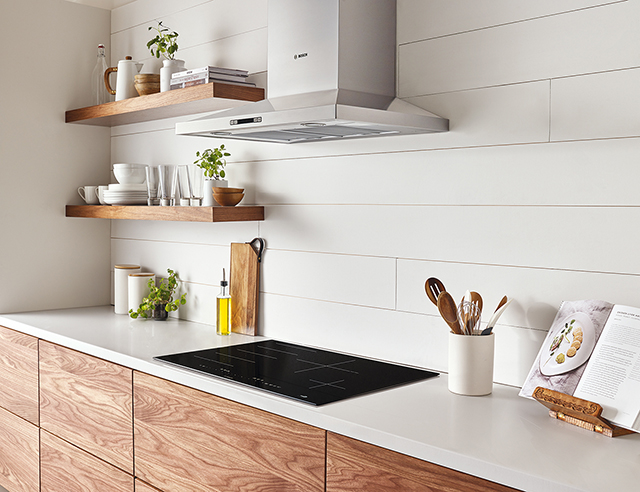
Induction cooktops and connected hoods that deliver the right ventilation level increase kitchen safety.
Photo: Bosch Home Appliances
KITCHEN SAFETY
Smart technology helps in kitchen spaces too, the professionals all say.
“The number-one concern in the kitchen is fire,” Herd points out. Smart appliances can alert you to a burner left unattended and remotely turn it off. Induction cooktop sales are also steadily increasing, in part because of safety considerations; they are much less likely to be the cause of a fire or burn.
Smart new ventilation hoods that pull smoke and gases out of the air by syncing with paired induction cooktops for the right performance level also add safety to a kitchen. Smart faucets that let homeowners access water without spreading viruses or food-borne contaminants serve a similar function. These aren’t new products; they’re just increasingly interesting to home buyers and homeowners.
Young sees changing trends in microwave placement, locating the appliances more frequently “at an easier and safer reach range below the counter, either integrated into the cabinetry or using a microwave drawer,” she reports.
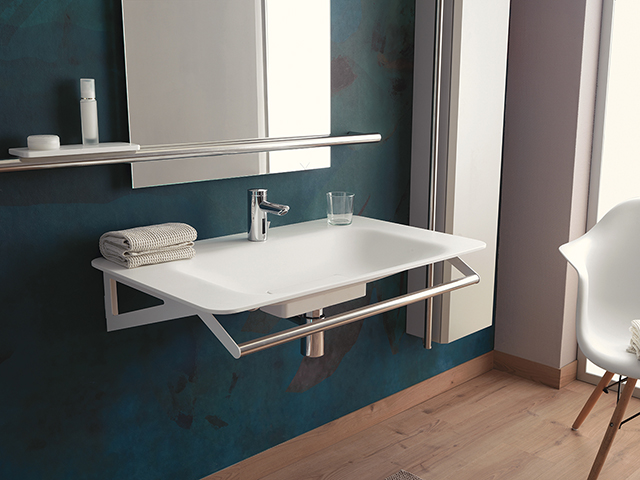
Safety can be stylish with integrated grab bars.
Photo: Ponte Giulio, pontegiuliousa.com
Wellness by Design (Tiller Press, 2020)
BATHROOM SAFETY
Bathrooms are another potential injury and illness zone, particularly for seniors.
Herd, for one, is seeing growth in voice-control tub and shower features to add safety in these spaces. “Enabling our aging loved ones to ask Alexa to fill up the tub with 80-degree water or to turn on the shower allows them to be a bit safer from bending over and having a fall in the bathroom,” the integrator points out.
Designer Stapperfenne is seeing “mainstream acceptance” in toilets with bidet functionality. These also add an element of bathroom safety by eliminating the need for often-risky tub visits for personal hygiene tasks.
Designer Neiges is adding bathroom safety by specifying antibacterial lights in her Colorado projects, she says. She first spotted this technology at the 2020 Kitchen & Bath Industry Show (KBIS) in the Broan booth, she recalls, as the manufacturer showcased it as a new feature of its bath ventilation products.
Pumarejo is doing a lot of curbless showers in San Antonio, she reports. Linen textured slip-resistant tiles are also a go-to for her. Both she and Neiges cite wall-mount toilets as an easy-to-use safety feature for many clients. “These toilets make for easy cleaning with no grooves for germs to hang out,” the Texan designer comments.
“We’re seeing more interest in touchless faucets, automated toilets and automated soap dispensers in the bathroom,” designer Lowry notes. “Touchless lighting in the bathroom and throughout the home is also showing increased demand,” she adds, as is antimicrobial or non-porous surfaces in bathroom spaces.
Flip-down shower seats and integrated grab bars are also gaining favor, Stapperfenne comments. “Beauty, luxury and safety can all co-exist in the same space,” she adds. The designer looks for “items that look inconspicuous,” she says, like “corner and shower shelving with integrated grab bars.”
FINAL WORDS
We have survived the pandemic, “but it has changed us,” Pumarejo observes.
“Clients are now asking for things like bulk pantry storage, home generators and even indoor hydroponic gardens that can grow your own food,” she notes. These all result from living through COVID and anticipating future potential challenges to the food supply and our ability to provide for our families, she adds.
“I, for one, don’t think it’s a bad idea to be more self-sustainable,” the designer opines. It’s definitely not a bad idea for the kitchen and bath industry to help achieve that goal, either.”
Jamie Gold, CKD, CAPS, MCCWC is an author, wellness design consultant and industry speaker. Her third book, Wellness by Design (Simon & Schuster), published September 2020. You can learn more about her Wellness Market presentations, books, Wellness Wednesdays Clubhouses conversations and consulting services at jamiegold.net.
The post Key Trends in Safety & Wellness Design appeared first on Kitchen & Bath Design News.
2021 Award Winners
“Less is more” was a phrase heard often during the judging of the 2021 Kitchen & Bath Design Awards, sponsored by Kitchen & Bath Design News. Six of the industry’s leading professionals gathered to assess the entries, and while all were struck by the beauty of the entries, they gravitated toward the designs that were streamlined, well thought-out and didn’t try to do too much within the space.
The right details were also key to the winning designs. Clever storage tucked into niches, paneled appliances that deliver a more cohesive look and exceptional cabinets, lighting and hardware were among the elements that elevated the leading entries.
The best of design is what is being celebrated in the 33 spaces that have been named winners of the 2021 Kitchen & Bath Design Awards. Over 200 projects were judged in 11 categories: Best Kitchen Over $225,000; Best Kitchen $150,000-$225,000; Best Kitchen $75,000-$150,000; Best Kitchen Under $75,000; Best Specialty Kitchen; Best Master Bath Over $100,000; Best Master Bath $50,000-$100,000; Best Master Bath Under $50,000; Best Powder Room; Best Showroom, and Best Specialty Project.
The prestigious judging panel for the awards included:
• Peter Cardamone, Bluebell Kitchens, Wayne, PA
• Laura Giampaolo, Nu-Way Kitchen & Bath, Utica, MI
• Laurie Haefele, Haefele Design, Santa Monica, CA
• Sarah Kahn Turner, Jennifer Gilmer Kitchen & Bath, Chevy Chase, MD
• Linda Larisch, CMKBD, DESIGNfirst Builders, Itasca, IL
• Doug Walter, CMKBD, Doug Walter Architects, Denver, CO
Each of the projects was evaluated on multiple points, including: aesthetic appeal, functionality of the space, attention to detail, handling of unusual situations, originality, selection of colors and finishes, and overall impression. The judges also provided design feedback to all of the entrants.
The judging panel was pleased to see a departure from the ever-popular white and gray cabinets. “I actually loved the moody, dark, really dramatic kitchens, and the winners were the ones that had the dark and moody feel in contrast to the light,” stated Haefele. She noted the added use of natural woods, “which have a lot of warmth. Black kitchens have been around for a while, but integrating the lighter wood makes them less stark and more warm.”
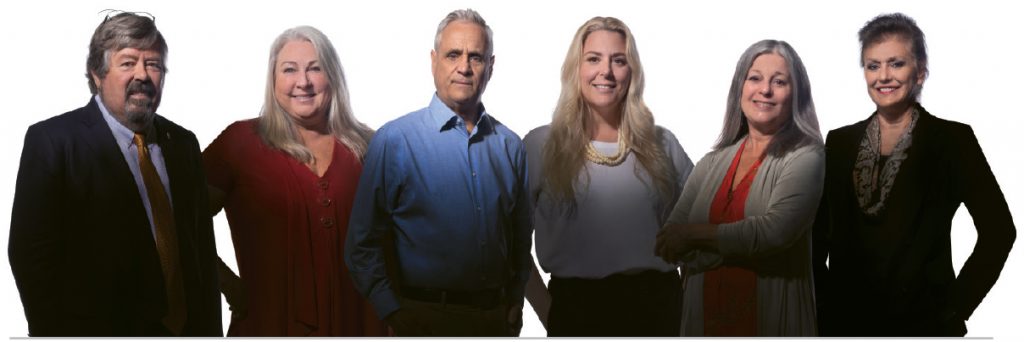
“There was a ton of black mixed with naturals,” concurred Giampaolo, along with stone features. “It was very organic, with a lot of warm tones.”
“We saw a lot of moody tones, darker woods, the use of metals and metal paints,” added Kahn Turner. She noted that, while there were still several classic light and bright kitchens, the painted finishes were grays and mushroom tones – a softer, wispy palette.
Walter said that, while white is not dead, there were many shades of off white included. “Darker colors were very popular this year – dark green, navy in particular, and black,” he observed.
Larisch also noted additional combinations going on beyond the dark and light cabinets. “We saw mixtures of gloss and matte finishes, different pops of color, large windows with dark interiors, and different styles for hoods,” she offered.
But, she continued, “I just kept saying ‘less is more.’ Some designers tried to mix too many materials together and they just didn’t pull it off, versus other mixed materials that blended and seemed timeless.”
KEEPING IT SIMPLE
While Cardamone advocated for taking chances with design to stand out from the pack, he also stressed the importance of keeping things streamlined. “There’s a tendency to crowd an element like a tall refrigerator or place a wall oven next to a cooktop, with a hood squished in there. Instead, you should
let everything have room to breathe,” he stated.
“I’m excited to see people really embracing and stretching some of the cabinetry away from hoods and other things,” noted Kahn Turner. “Windows also give rooms a little more breathing space.” She notes the best designs “don’t try to cram as much cabinetry as possible into a small space, which can sometimes feel disjointed and a little heavy.”
Giampaolo agreed, noting that a few of the designs came across as forced, “like they were trying so hard to use the freestanding tub in the bath when there was no room for it. The designs that came off the best may not have had the most materials in them, but they were done correctly. They were sized, they were comfortable,” she explained.
IN THE DETAILS
“What separates a good project from a great project is attention to detail,” Walter stressed. He added that, sometimes, the judging between first and second place is so close, and what can make the difference is some small details. He was especially impressed by the dramatic hoods he saw, and the clever use of the sixth wall – the ceiling.
“I think we saw the cream rise to the top in the subtle details – the fit and finish,” concurred Kahn Turner. “Designers need to pay attention to the little things, such as pulling a cabinet panel forward so that it flushes out with the door, making sure that you have clearances, that your cabinets aren’t too spindly looking and narrow.”
The kitchens that stood out to Giampaolo were those that paid attention to unique details – finding usable space in otherwise unusable areas. “Some of the concepts with the hidden wine cubbies were amazing,” she offered.
“The ones that were outstanding were the ones that were unique and cohesive. They used textured walls. They used hidden storage units. They delivered multi-use designs, blending with the room next to it, making an entire space that you could eat, you could entertain, you could work, you could cook, you could do homework,” she added.
Haefele noted that, when first looking at an image, she knew instinctively when she liked it. “It’s when you really get into the details of the design that you can see why you liked it, that it’s so well thought out,” she reported.
Larisch stressed that the details need to be well thought out to make them work within the design, however. “The details need to make sense. You don’t want ones that are just randomly thrown in or had no thought process behind them,” she remarked. “You also need to take care of the details throughout the space and not miss an area. Every single part of that kitchen or bath should work cohesively through each turn.”
On pages 48-73, KBDN shares expanded coverage of the winning projects in the sixth annual competition. For more photos of this year’s winners, as well as insights from the panel of judges, visit www.KitchenBathDesign.com. 
VIEW ALL 2021 KITCHEN & BATH DESIGN AWARDS WINNERS
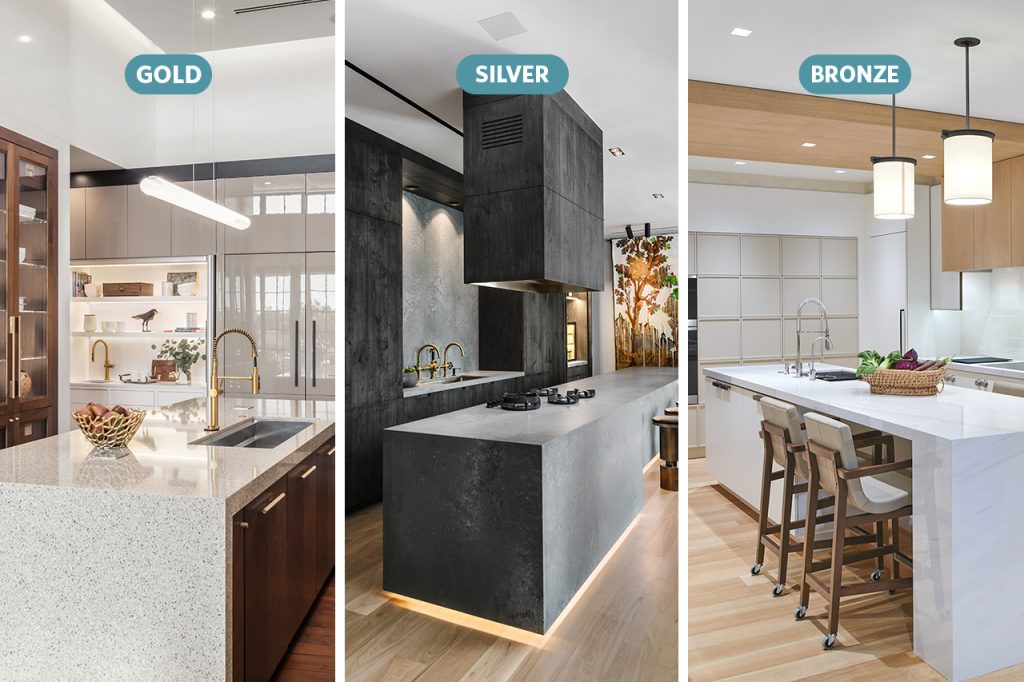
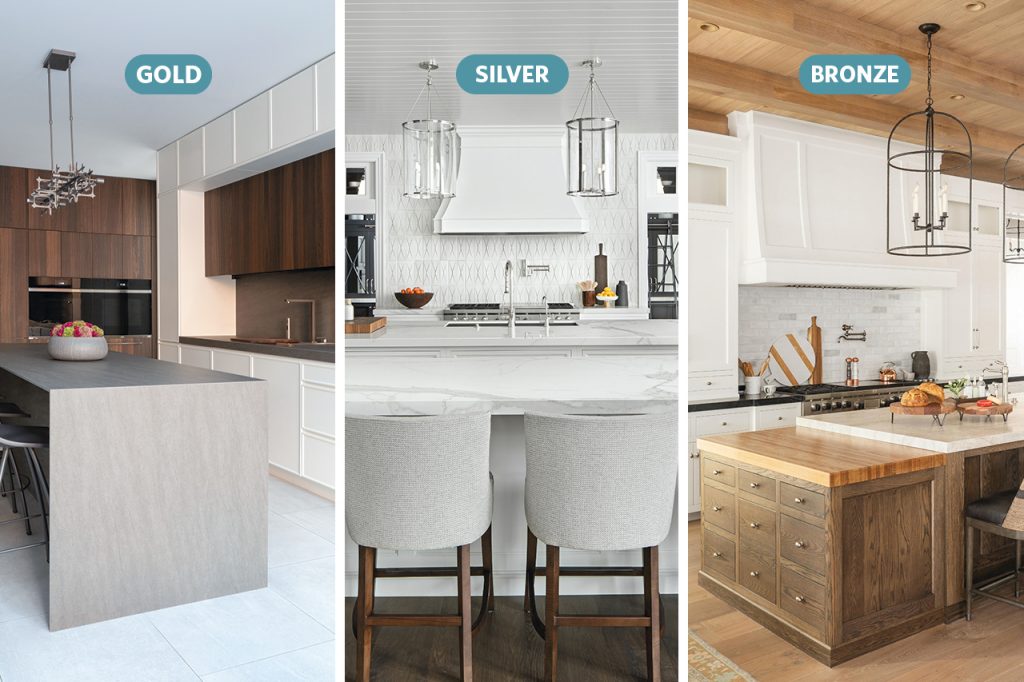
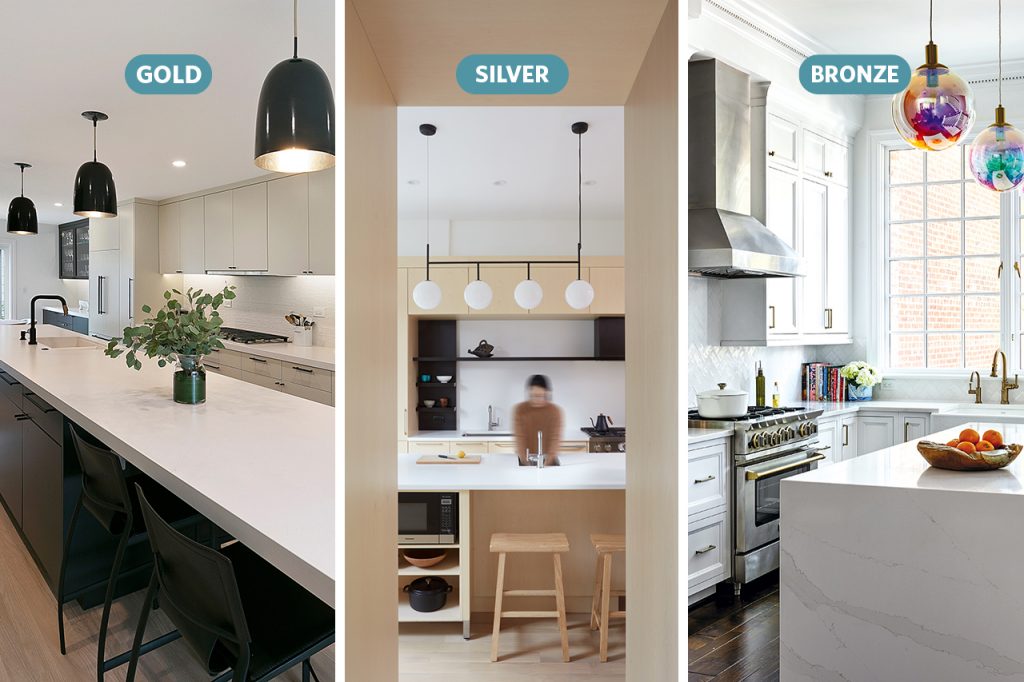
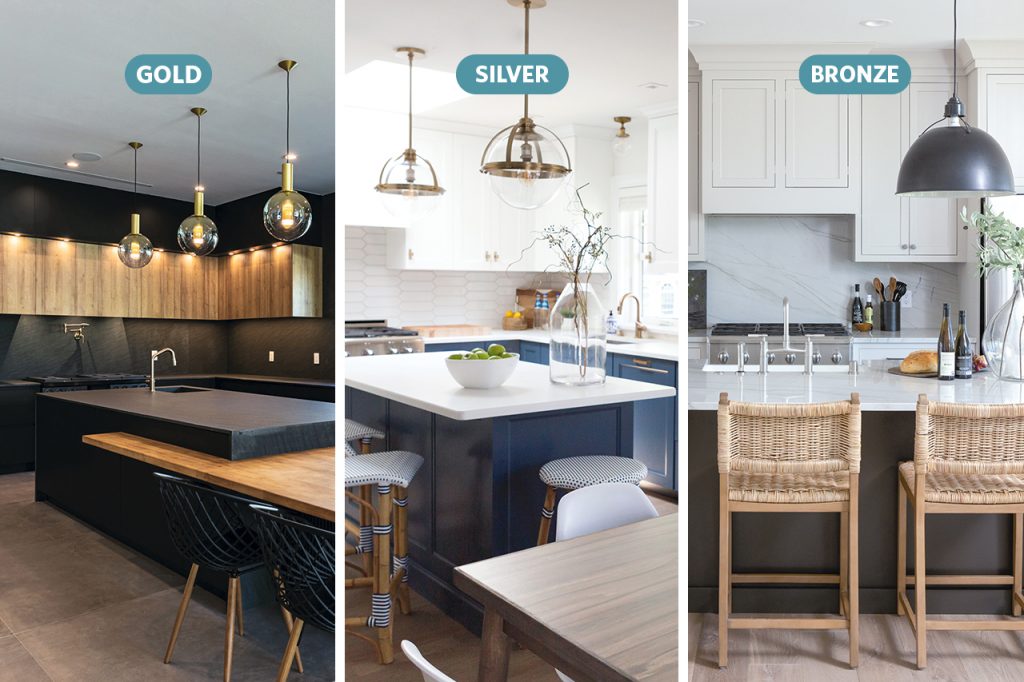
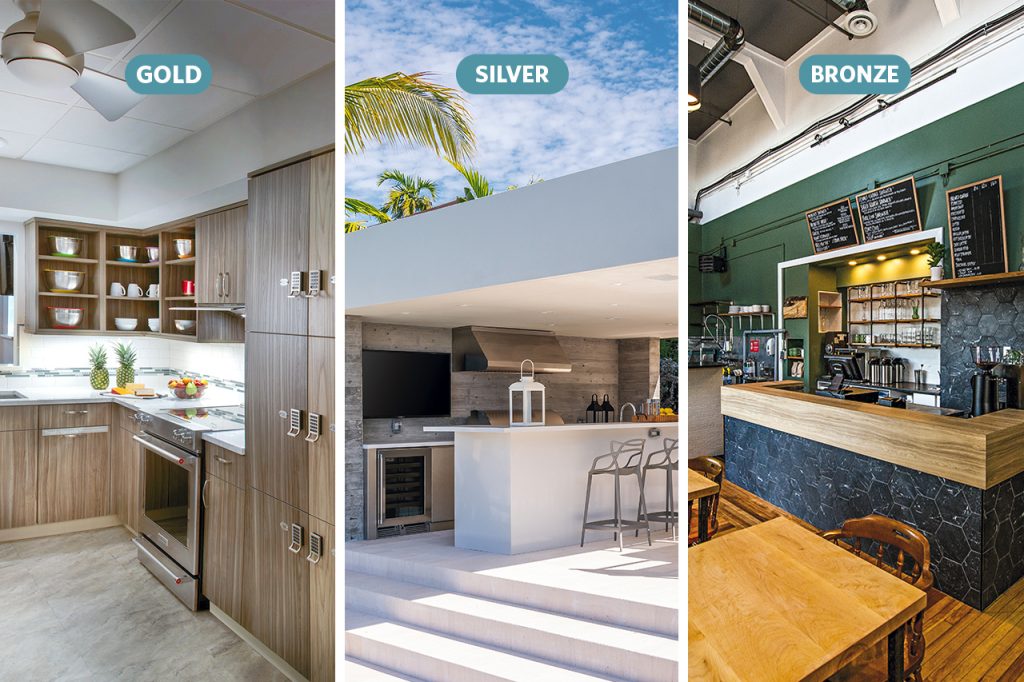
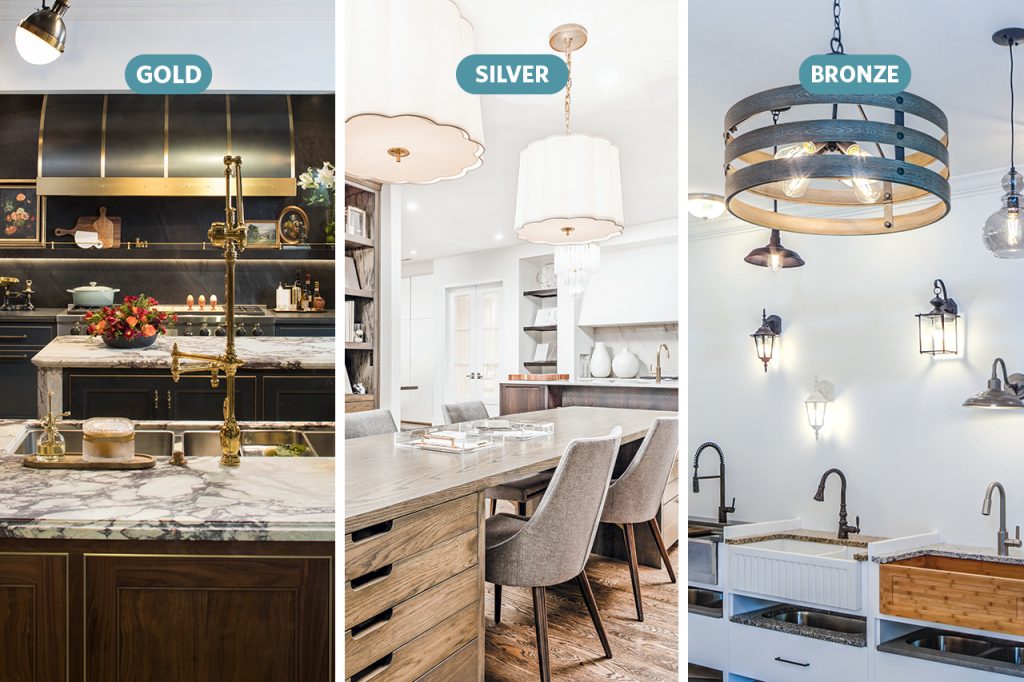
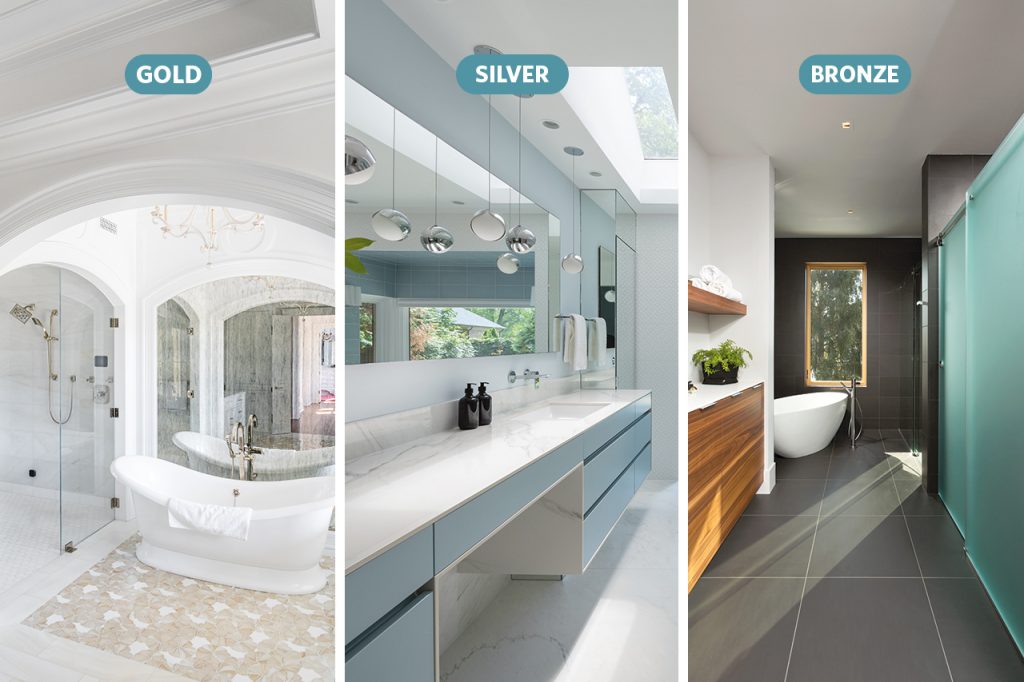
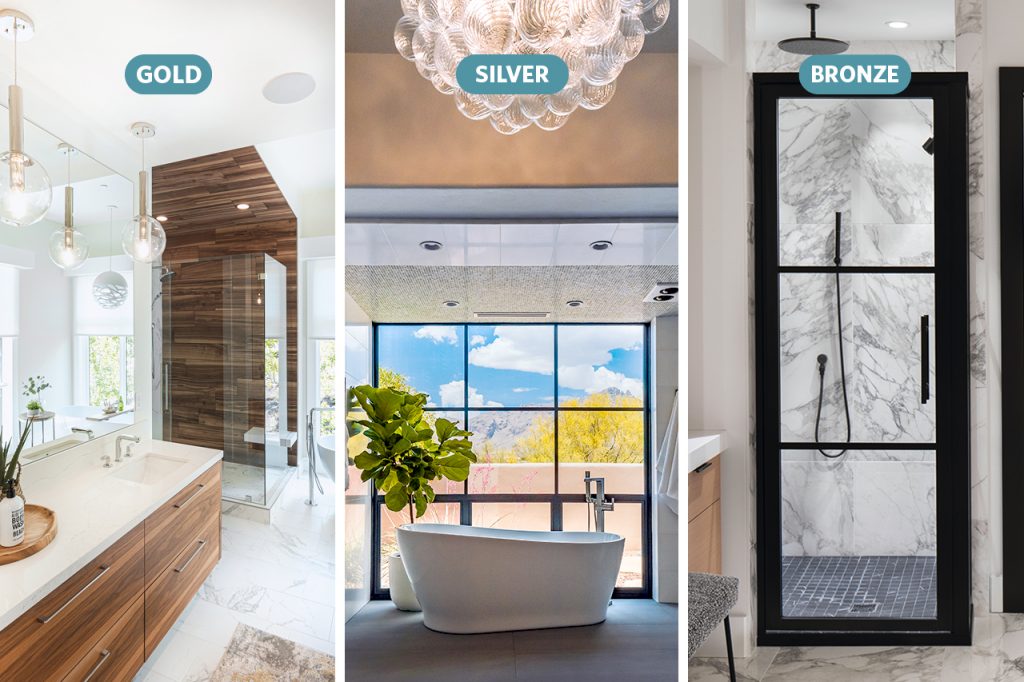
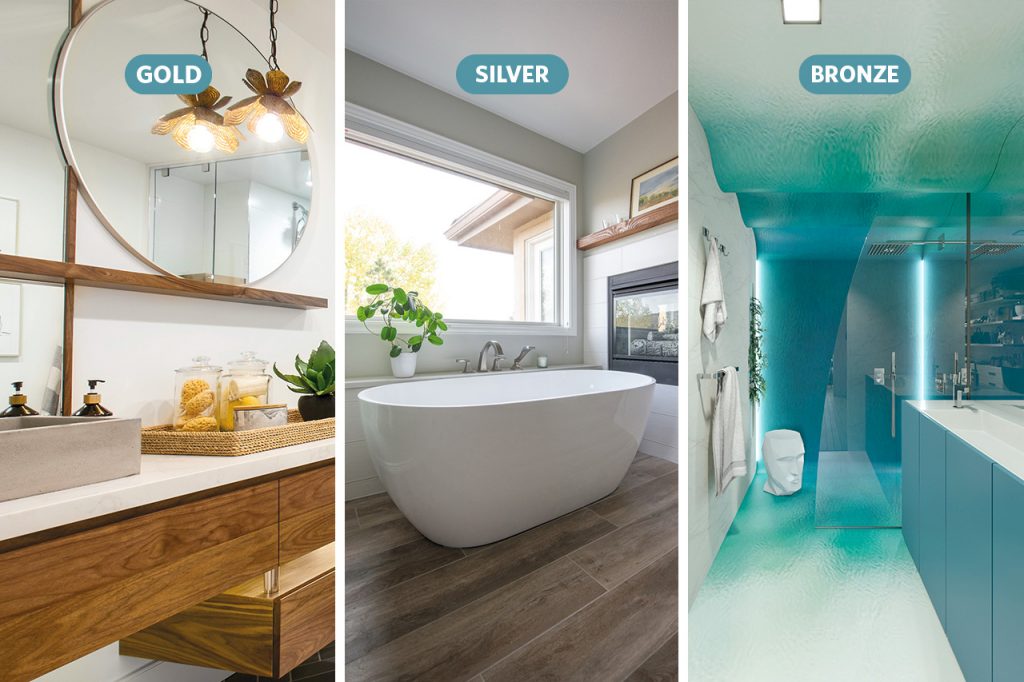
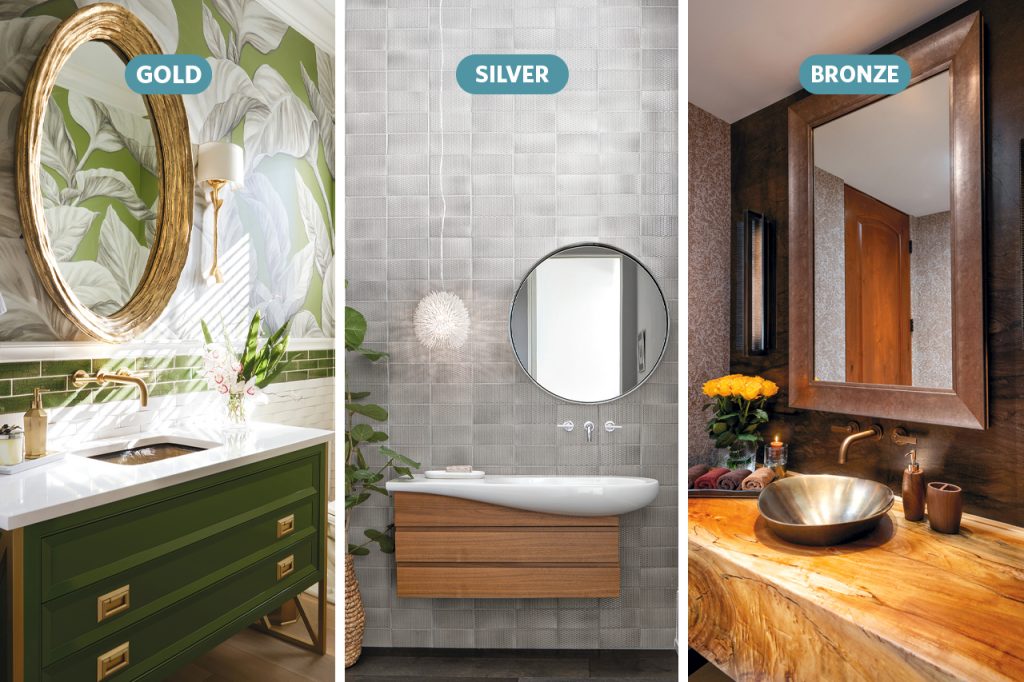
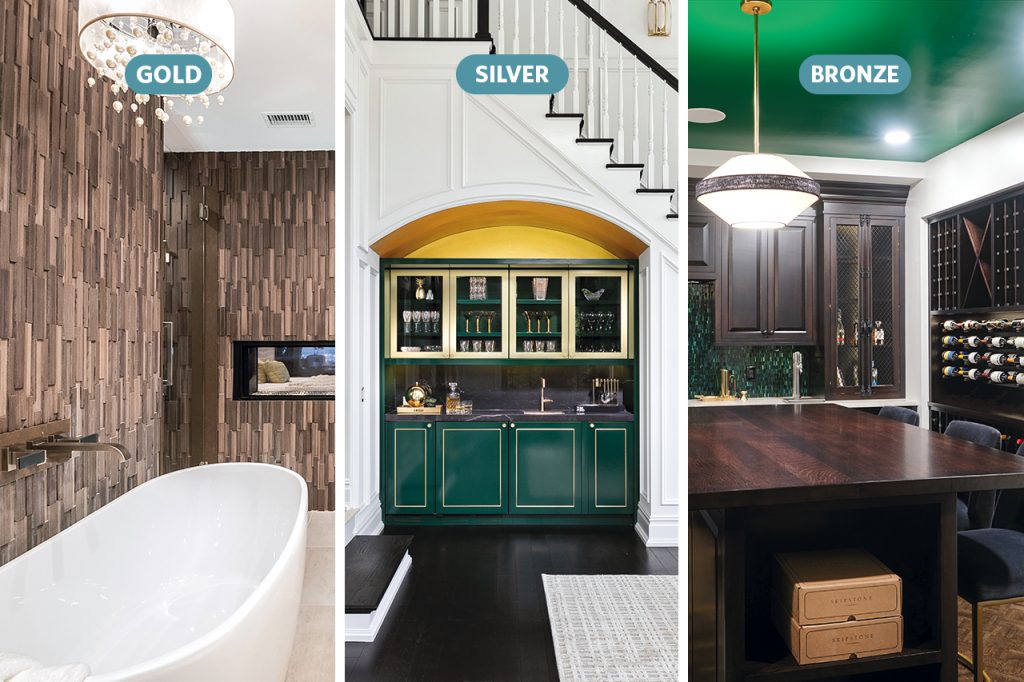
The post 2021 Award Winners appeared first on Kitchen & Bath Design News.